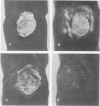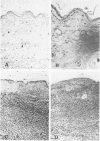Abstract
Glutaraldehyde (GA)-treated skin allografts and xenografts (from mice, rats and guinea-pigs) behave in the same way as judged from retention time, gross inspection, microscopic examination, and assays for graft antigenicity. The GA-treated grafts are retained for long periods of time (an increase by more than 6-fold as compared to untreated grafts), they are tightly bound to the recipient, they are initially soft but become progressively stiffer with minimal shrinkage in size, and remain free from infection. The histology shows that the grafts are nonviable and fixed by the GA, they are avascularized but the general structure of the skin (epidermis, adnexa and dermis) is preserved for about 3 months. The antigenicity of the GA-treated grafts is very poor, actually it is undetectable. They do not elicit the formation of cytotoxic antibodies, and animals sensitized by untreated allografts retain the GA-treated allografts similarly to normal unsensitized recipients. The lack of transplantation immunity is also indicated by the fact that GA-treated isografts behave and are rejected similarly to GA-treated allografts and xenografts. Microscopic examination suggests that the mechanism of rejection of GA-treated grafts is similar to that operating in the rejection of an inert foreign body. The marked prlongation in the retention of Ga-treated skin grafts and their properties justify investigations on the applicability of these grafts in clinical practice.
Full text
PDF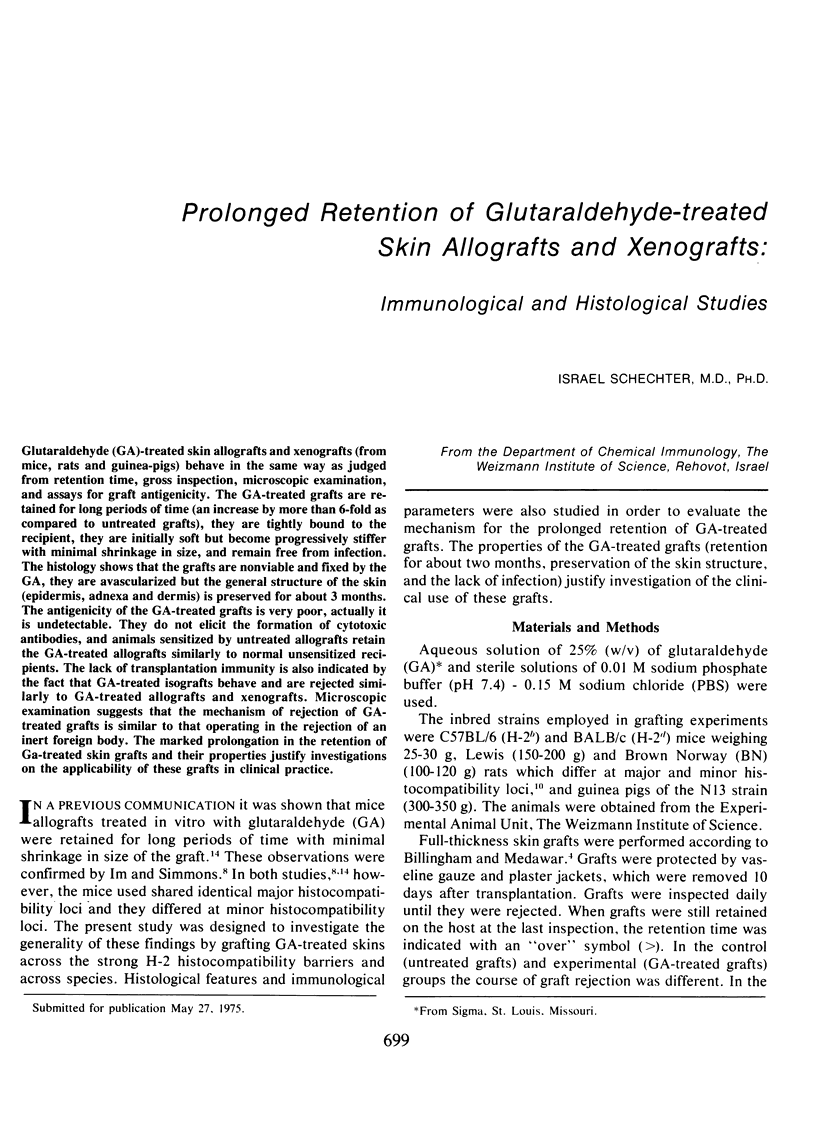
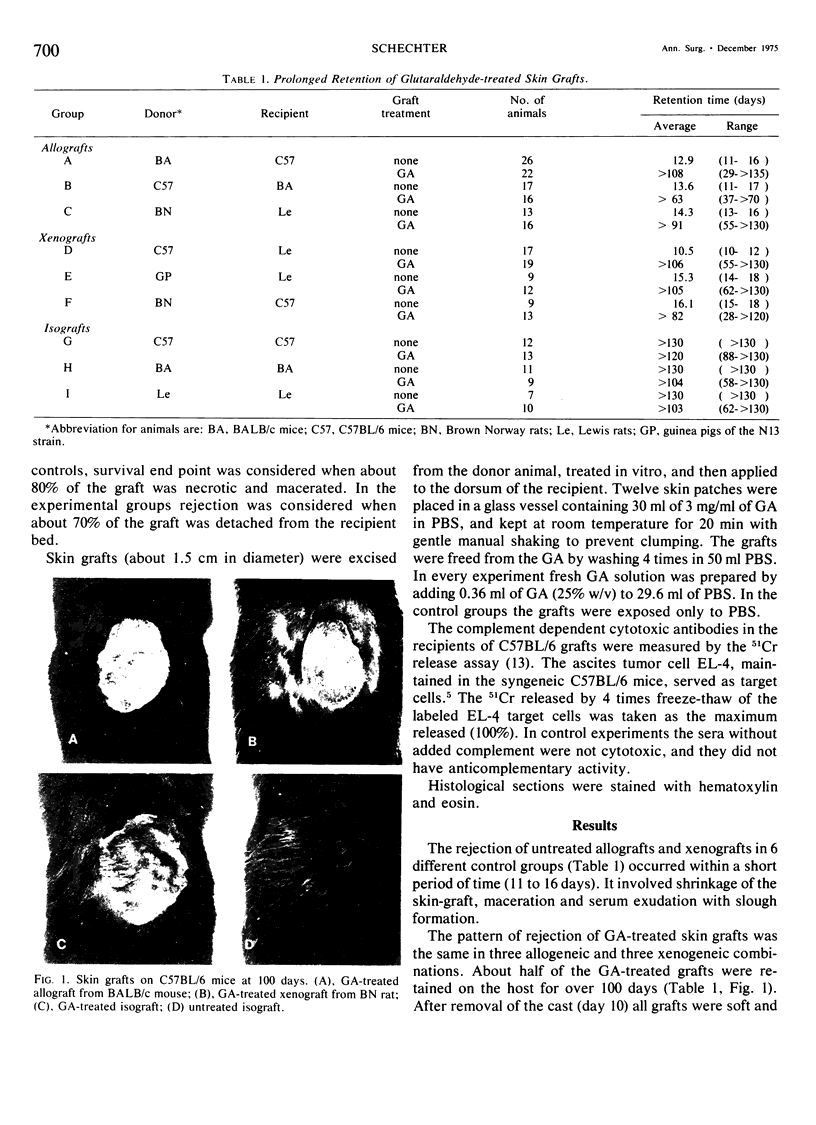
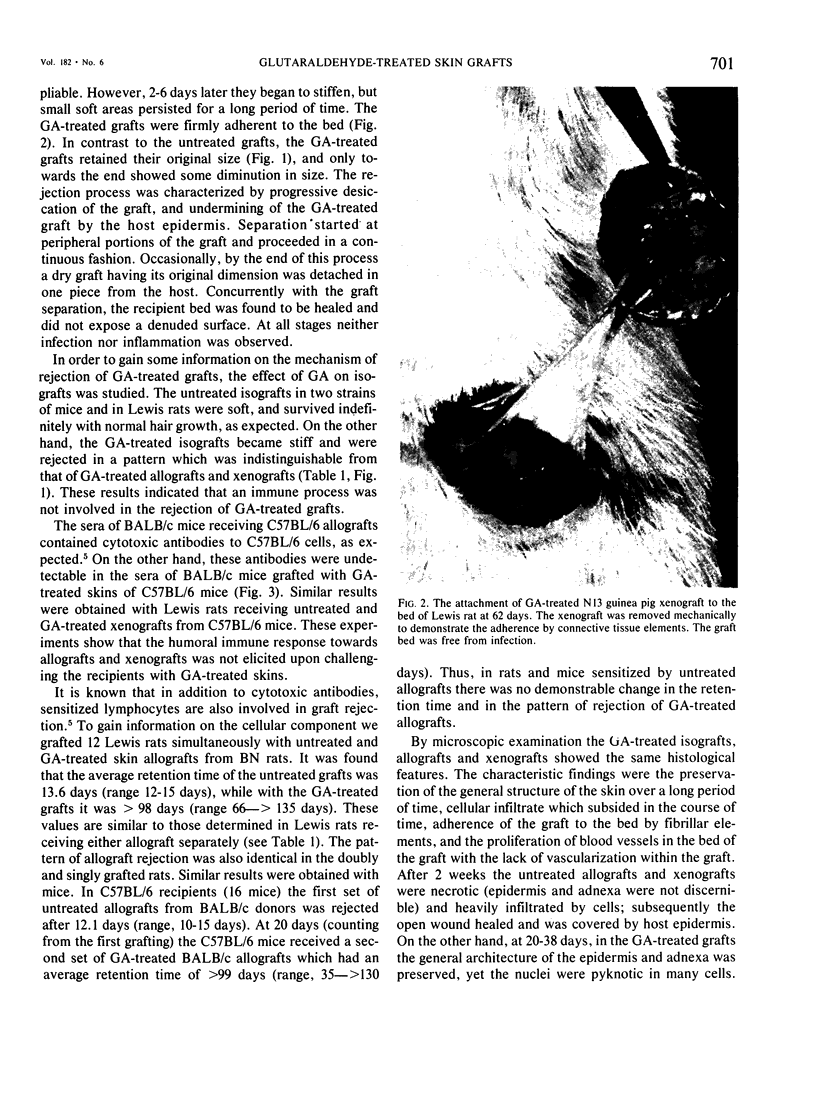
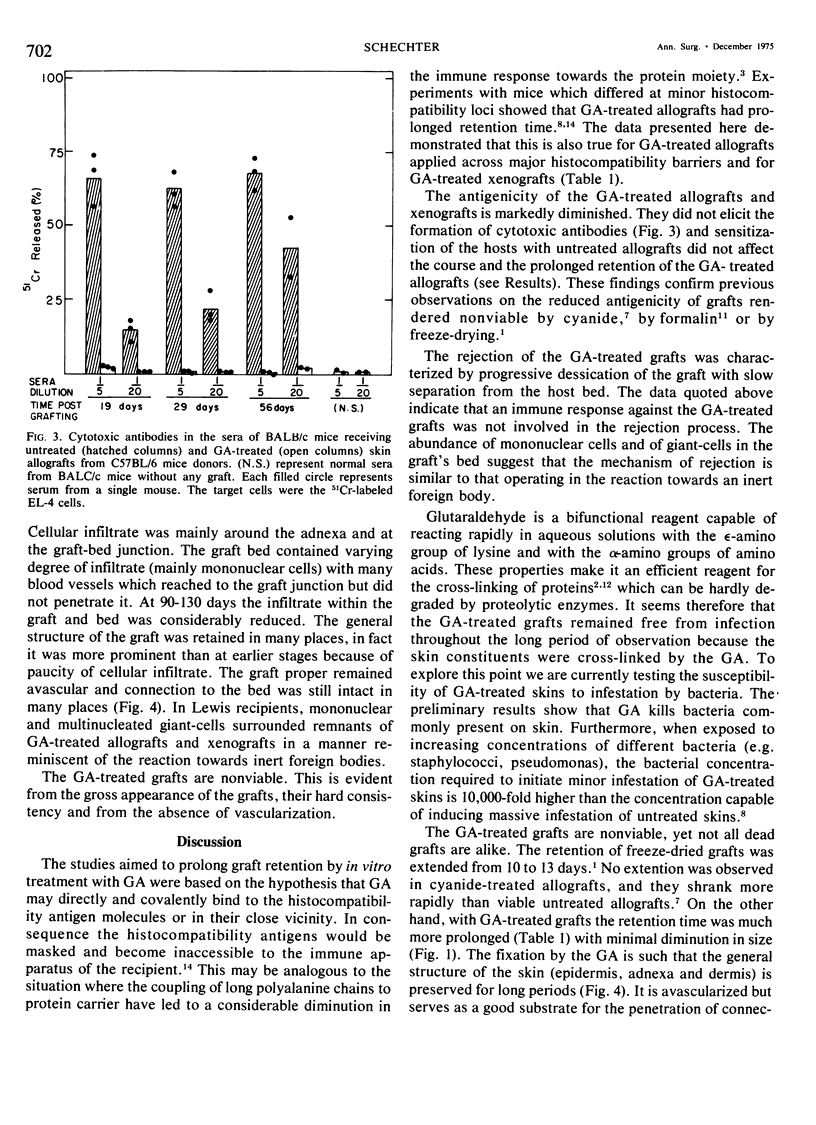
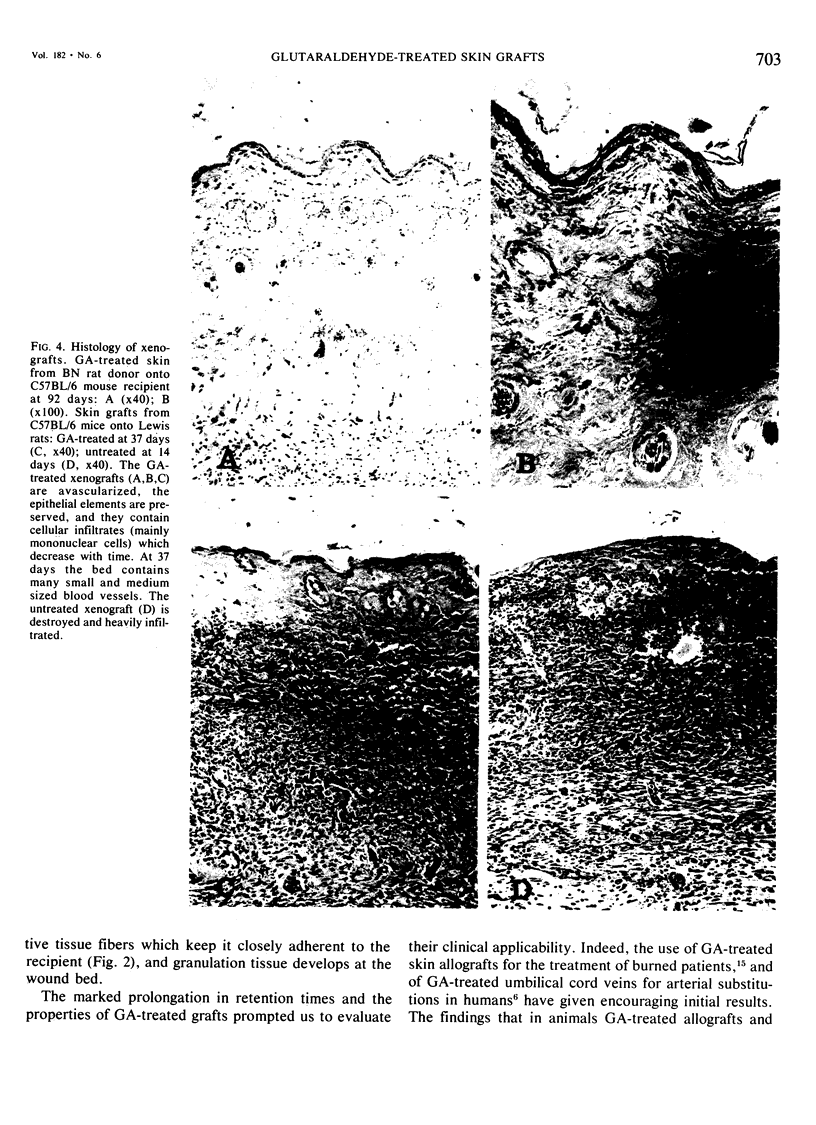
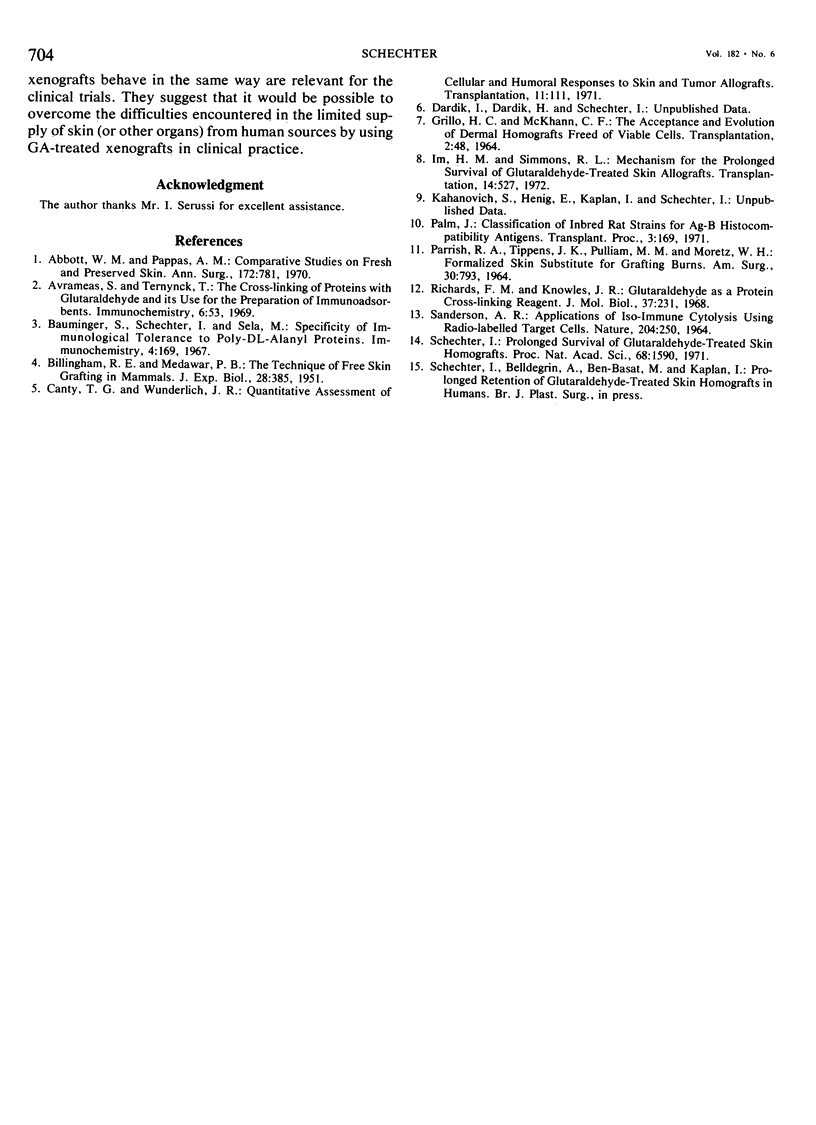
Images in this article
Selected References
These references are in PubMed. This may not be the complete list of references from this article.
- Abbott W. M., Pappas A. M. Comparative studies on fresh and preserved skin: fundamental biologic differences in behavior as grafts. Ann Surg. 1970 Nov;172(5):781–786. doi: 10.1097/00000658-197011000-00002. [DOI] [PMC free article] [PubMed] [Google Scholar]
- Avrameas S., Ternynck T. The cross-linking of proteins with glutaraldehyde and its use for the preparation of immunoadsorbents. Immunochemistry. 1969 Jan;6(1):53–66. doi: 10.1016/0019-2791(69)90178-5. [DOI] [PubMed] [Google Scholar]
- Bauminger S., Schechter I., Sela M. Specificity of immunological tolerance to poly-DL-aalanyl proteins. Immunochemistry. 1967 May;4(3):169–181. doi: 10.1016/0019-2791(67)90126-7. [DOI] [PubMed] [Google Scholar]
- Canty T. G., Wunderlich J. R. Quantitative assessment of cellular and humoral responses to skin and tumor allografts. Transplantation. 1971 Feb;11(2):111–116. doi: 10.1097/00007890-197102000-00001. [DOI] [PubMed] [Google Scholar]
- GRILLO H. C., MCKHANN C. F. THE ACCEPTANCE AND EVOLUTION OF DERMAL HOMOGRAFTS FREED OF VIABLE CELLS. Transplantation. 1964 Jan;2:48–59. doi: 10.1097/00007890-196401000-00006. [DOI] [PubMed] [Google Scholar]
- Im H. M., Simmons R. L. Mechanism for the prolonged survival of glutaraldehyde-treated skin allografts. Transplantation. 1972 Oct;14(4):527–530. doi: 10.1097/00007890-197210000-00023. [DOI] [PubMed] [Google Scholar]
- PARRISH R. A., TIPPENS J. K., PULLIAM M. M., MORETZ W. H. FORMALIZED SKIN SUBSTITUTE FOR GRAFTING BURNS: A PRELIMINARY REPORT. Am Surg. 1964 Nov;30:793–798. [PubMed] [Google Scholar]
- Palm J. Classification of inbred rat strains for Ag-B histocompatibility antigens. Transplant Proc. 1971 Mar;3(1):169–171. [PubMed] [Google Scholar]
- Richards F. M., Knowles J. R. Glutaraldehyde as a protein cross-linkage reagent. J Mol Biol. 1968 Oct 14;37(1):231–233. doi: 10.1016/0022-2836(68)90086-7. [DOI] [PubMed] [Google Scholar]
- SANDERSON A. R. APPLICATIONS OF ISO-IMMUNE CYTOLYSIS USING RADIOLABELLED TARGET CELLS. Nature. 1964 Oct 17;204:250–253. doi: 10.1038/204250a0. [DOI] [PubMed] [Google Scholar]
- Schechter I. Prolonged survival of glutaraldehyde-treated skin homografts. Proc Natl Acad Sci U S A. 1971 Jul;68(7):1590–1593. doi: 10.1073/pnas.68.7.1590. [DOI] [PMC free article] [PubMed] [Google Scholar]



